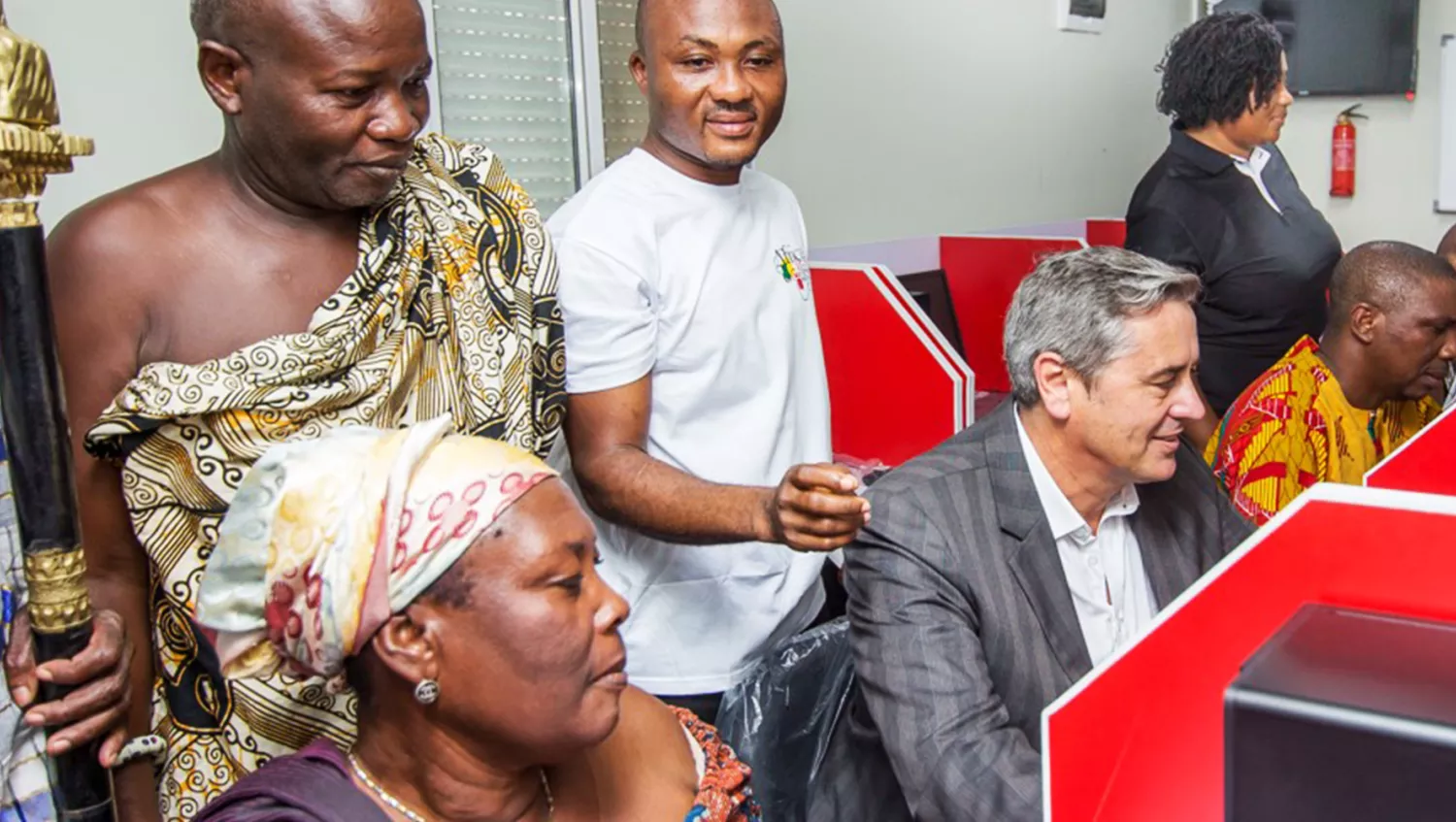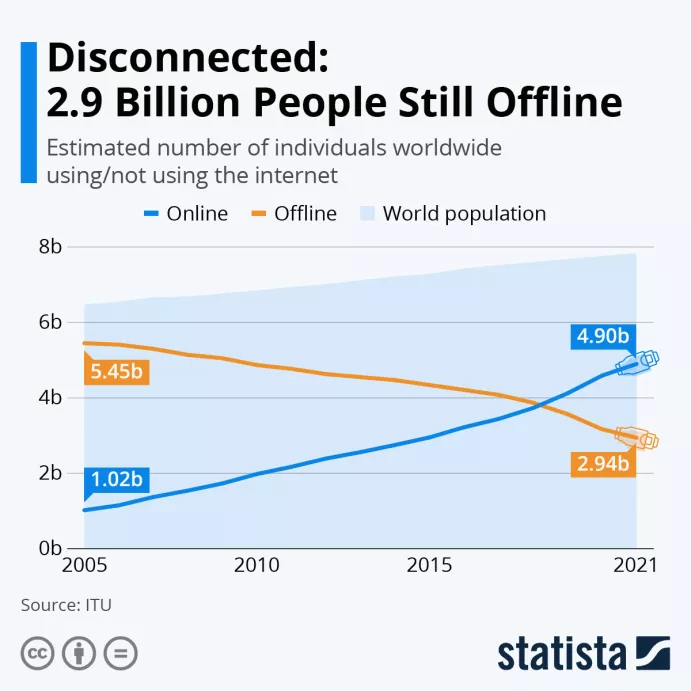This piece originally appeared on the World Economic Forum Agenda blog.
- The COVID-19 pandemic has shown the importance of digital connectivity for everything from work-from-home to education and telemedicine.
- It also illustrated the global digital divide: 2.9 billion people worldwide do not use the internet.
- Organizations must find new ways to collaborate and partner to develop affordable and accessible digital solutions for health, finance and education, and to close this gap.
Today’s global challenges require us to think big and bring maximum ambition to the table. The challenge of achieving universal digital inclusion is no exception. We need to mobilize the best ideas, resources and know-how, and hold ourselves accountable to specific commitments. This is what the World Economic Forum’s EDISON Alliance’s 1 Billion Lives Challenge sets out to do by developing affordable and accessible digital solutions across health, finance and education by 2025.
Enabling connectivity
The COVID-19 pandemic has powerfully demonstrated the importance of connectivity for everything from work-from-home to education and telemedicine – and the urgency of addressing the global digital divide. However, owing to cost, scalability, power outages and educational barriers, the reach of the internet in many developing countries remains limited and 2.9 billion people worldwide don't use the internet.
We must come together to expedite the delivery of solutions. Everyone in a position to help close this digital divide must do so without delay, drawing on their strengths. American Tower is using its communications infrastructure in an innovative way by building digital communities at or near tower sites to provide education and other services to people in remote and rural areas.
In many developing countries, a communications tower is not only the first broadband connection for a community but also the first connection to electricity. In several of our digital communities, we have built computer-equipped kiosks that use the power supply and broadband connection from our nearby tower sites. In other cases, we have built classrooms at the base of our towers staffed by non-profit partners.
We now have close to 300 digital communities, located in Africa, Asia, North America and South America. Since the inception of our programme, more than 128,000 students have enrolled in our learning centres and more than 116,000 have received digital skills certifications. The latter enhances employability and entrepreneurship opportunities and better positions individuals to access information, e-government services and other online resources.
Stepping up to do more
We must grow these efforts in a significant way and, through the 1 Billion Lives Challenge, we have pledged to do just that. In September, American Tower committed to building 2,000 digital communities over the next five years to improve the quality of life in underserved populations. This work will support connectivity worldwide through community education, healthcare access, financial inclusion and career development.
Crucial to American Tower’s success in meeting this commitment will be the power of partnership. In a fruitful collaboration, each player brings unique advantages, resources, relationships and know-how to address unmet needs. Building digital systems involves partnerships with wireless carriers, technology organizations, non-profits and others to bring transformational connectivity opportunities, like education and healthcare, to communities in need. In Nigeria, for example, 64 digital communities across 25 states deliver digital training and education with partners including IBM, the Lagos State Employment Trust Fund and Ondo State Ministry of Science and Technology.
Increasingly, public-private partnerships are complemented by private-private partnerships. Companies from different sectors collaborate at the project level in a particular country or region, supporting both business and social goals, and enhancing the well-being of the communities where we operate. For example, we are collaborating with Hewlett Packard Enterprise (HPE) in India, with American Tower providing education using its telecommunications infrastructure and HPE facilitating healthcare access to jointly enable the provision of services to communities in need.
Another such model might be a private company and a private academic institution. In a planned pilot project with Tecnológico de Monterrey, for example, we aim to define and implement digital communities in various rural and urban sectors of high vulnerability in Mexico. Our partner’s knowledge of the Mexican market will be of great value as we measure pilot outcomes and consider opportunities to scale in other parts of Mexico.
By fostering the adoption of a wide array of internet-enabled services, these partnerships can generate positive social and economic outcomes that will hasten the attainment of the Sustainable Development Goals, including access to quality education, reduction of poverty, reduction in economic inequality and achieving gender equality.
Bridging the digital divide, together
UN Secretary-General António Guterres has listed achieving universal connectivity by 2030 at the top of his areas for action. More organizations must make concrete commitments to help expedite the delivery of digital services for unserved and underserved populations. Together, we can co-create innovative, scalable models that will improve lives – 1 billion lives – in a meaningful and sustainable way. Now is the moment to think big.














